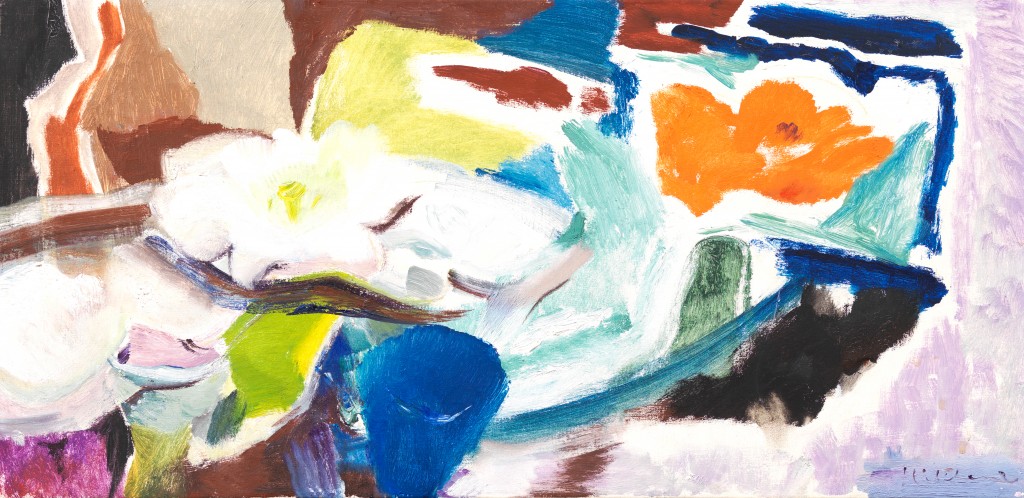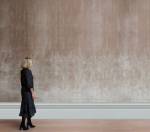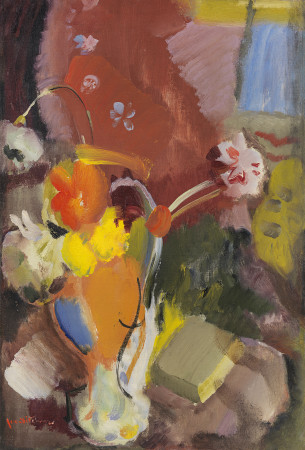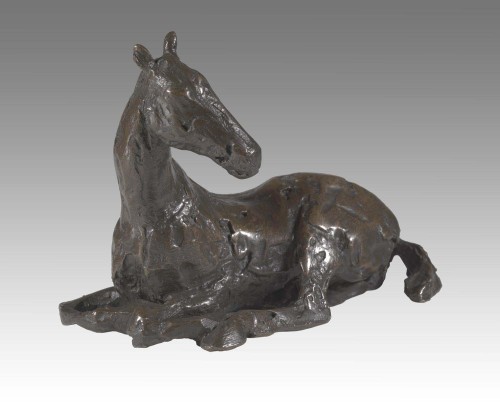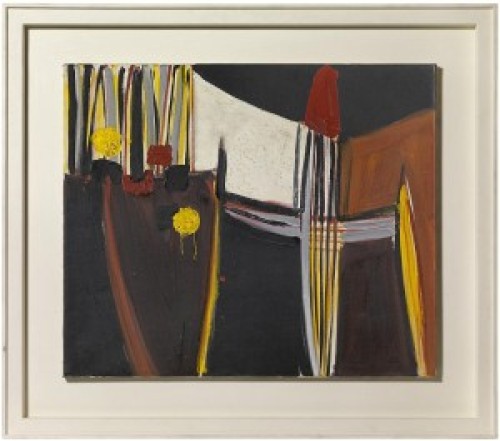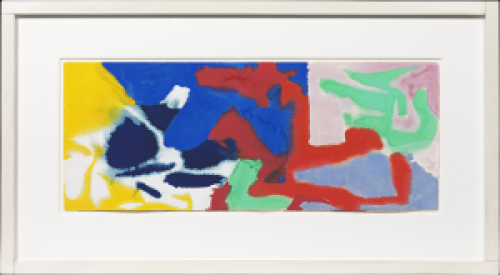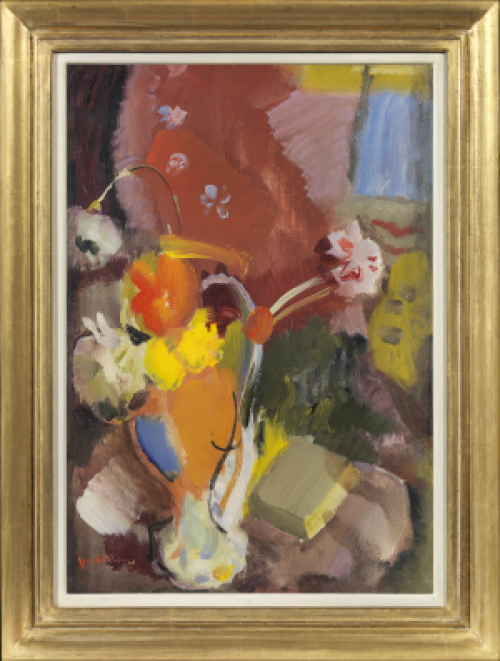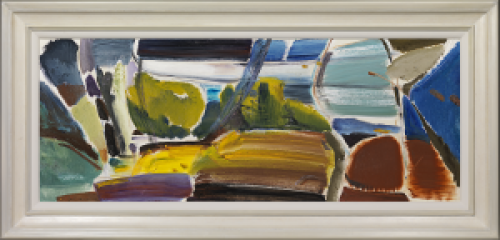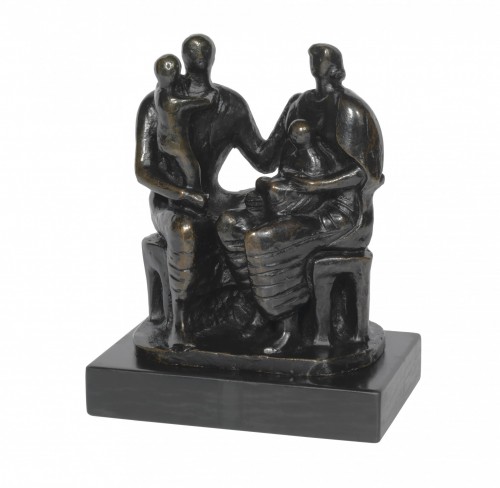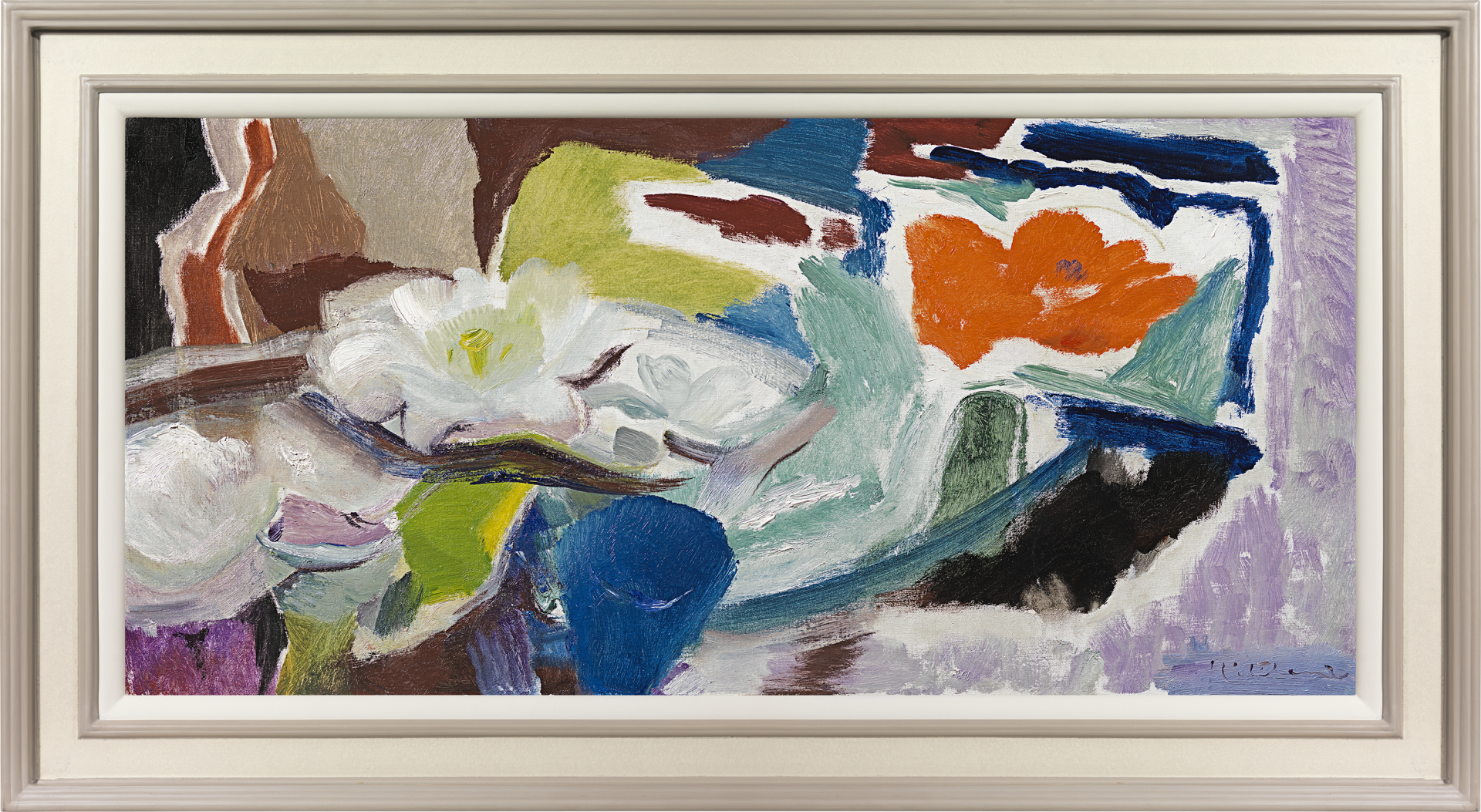IVON HITCHENS CBE
London 1893 - 1979 Petworth
Ref: BZ 238
The blue jug poppy
Signed lower right: Hitchens; signed, dated and inscribed on a label attached to the reverse: "The Blue Jug Poppy" / 1960 / by Ivon Hitchens / Greenleaves . Petworth . Sussex
Oil on canvas: 20 ¼ x 41 ½ in / 51.4 x 105.4 cm
Frame size: 27 ¾ x 49 in / 70.5 x 124.5 cm
In a colour washed gessoed frame
Provenance:
Howard Bliss, London (A4985)
New Art Centre, London (0271);
Sidney Gruson, USA, acquired from the above, 12th August 1986
Exhibited:
London, South London Gallery, circulated by the Art Exhibitions Bureau, Paintings by Ivon Hitchens from the Howard Bliss Collection, 15th July-5th August 1967; the exhibition then travelled to Southend-on-Sea, Beecroft Art Gallery, 20th August-18th September 1967, no.17
Poppies feature in many of Hitchens most successful flowerpieces, their bold red forms surrounded by white immediately catching the eye and drawing us into the picture. A second flower in bloom to the left balances the first in this vivacious painting, perhaps a Japanese Anemone, its beautiful silken, structural petals rivalling the red poppy for our attention. In amongst these brilliant and luminous blooms, Hitchens simplifies the details of the setting, balancing areas of bold, pure colour with passages of white primed canvas, sections of dark, opaque pigment with lighter, translucent sections, each formed and animated with masterful brushstrokes. Hitchens achieves a dynamic sense of movement across the double square, horizontal canvas, through the light and shade of the rich interior, directing our eyes with brush mark and colour to the palpable poppies and solid blue jug observed in swiftly brushed paint.
Peter Khoroche writes that Hitchens’ flower paintings, ‘though they amount to only a fraction of his total output, are a key ingredient of his artistic make-up, some of them outdoing his landscapes in freedom and audacity. He never devoted an entire exhibition to flower pieces but placed them like punctuation marks in his shows of landscape for the sake of variety and to sustain excitement…Technically, the painting of flowers gave scope for two of Hitchens’ greatest gifts: his virtuosic handling of the brush and his outstanding colour sense.’[1]
The decade preceding the execution of The blue jug poppy, 1960, had been full of success and acclaim for the artist, Hitchens’ position as one of the foremost English artists of the day assured; he was awarded a purchase prize at the Arts Council’s Festival of Britain exhibition, ‘60 paintings for 51’; he painted the largest mural in the country for Cecil Sharp House, unveiled in 1954; he represented Britain at the XXVIII Venice Biennale, with a subsequent European tour of exhibitions in Vienna, Munich, Paris and Amsterdam, and in 1958 was awarded CBE.
The original owner of this beautiful work was Howard Bliss (1894-1977), the younger brother of composer Sir Arthur Bliss, and also a gifted musician. After studying at Rugby and Trinity College, Cambridge, Bliss began his career in the 1920s as a cellist in chamber groups, as well as teaching the cello at Marlborough College for a number of years.[2] The Howard Bliss collection was formed from the mid-1940s by selling a large and valuable collection of prints he inherited, along with his brother, from his American, businessman father, his main interest being contemporary painting.
Khoroche writes of Bliss, ‘He had a sure eye for a good picture whether by a young unknown or an established artist such as Piper, Scott or Hitchens. This ability of his was acknowledged and given fuller scope by the Contemporary Art Society when it made him a member of its selection committee. Bliss first made contact with Hitchens in 1944 and would become his most important patron…Before long he was the possessor of some twenty paintings, and within ten years the number was to swell to over fifty. Bliss’s enthusiasm, encouragement and generosity knew no bounds. Not content with the role of patron, he was determined that others should realize and appreciate Hitchens’ genius which, he felt, was not getting anything like its proper due. This missionary zeal eventually found a practical outlet through the Art Exhibitions Bureau who toured Bliss’s collection throughout Britain, and even across Australia, from 1953 continuously into the mid-sixties. Often Bliss himself would travel to the latest venue to make sure the pictures were properly hung and the frames kept immaculate. Later he was to make generous donations of Hitchens’ work to museums and galleries, notably to the Tate and the Fitzwilliam at Cambridge.’[3]
We are grateful to Peter Khoroche, author of Ivon Hitchens, Lund Humphries, London, 2007, for his kind assistance with the cataloguing of this work.
[1] Peter Khoroche writing on Ivon Hitchens, An uprush of flowers, 1972, for Richard Green, 2016.
[2] Peter Khoroche, Ivon Hitchens, Andre Deutsch, 1990, p.65. Bliss was also a collector of the works of Thomas Hardy
[3] Ibid., p.65.


